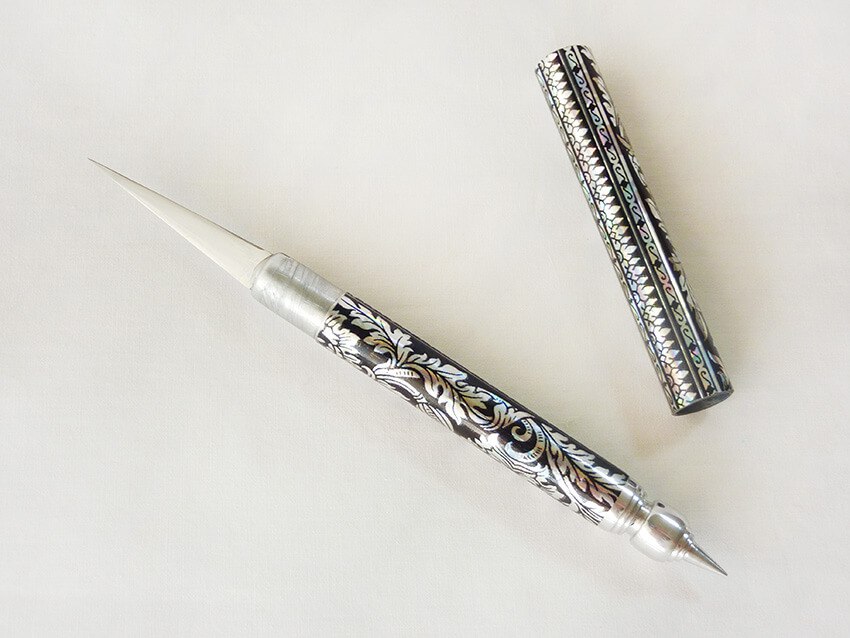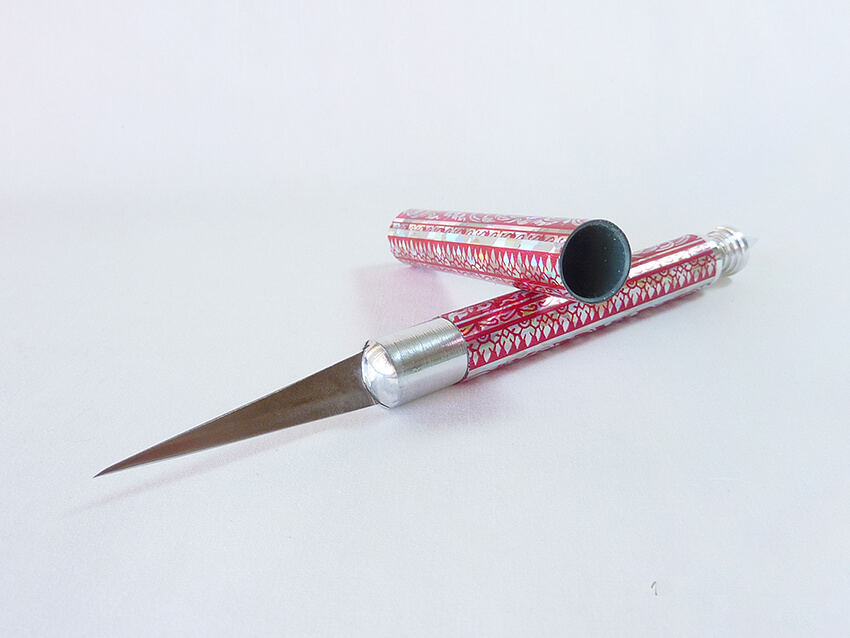Types of carving knives
Overview
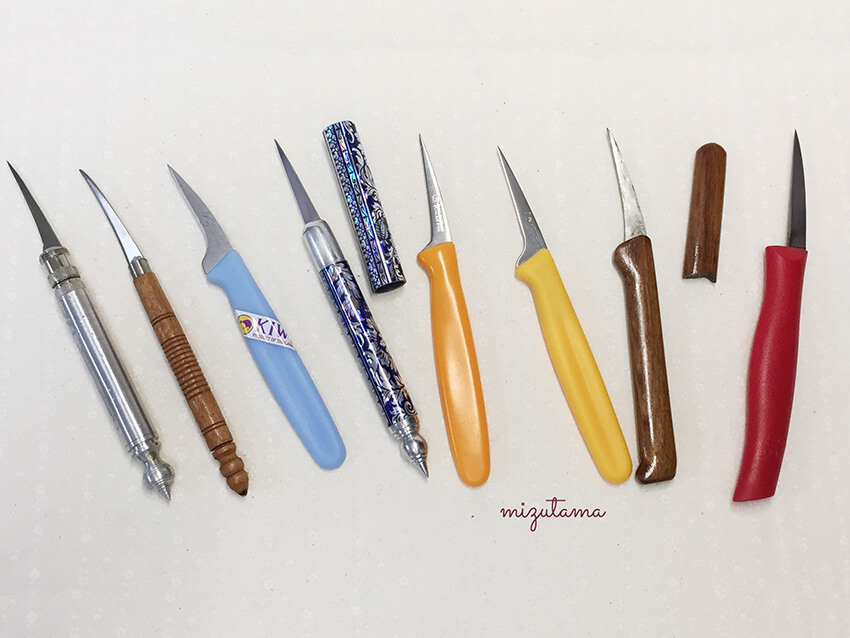
There are multiple carving knife types which have different use. Here I present four types of knifes and their best uses.
Knife info
Classic Thai carving knife
Carving knife in classic Thai design with a long V shaped blade. It is most commonly used by advanced or professional carvers. The blade is a long symmetrical shape, but one side can be used. There are many types of thickness, length, materials of the classic carving knives.
Generally, blades of cheap classic knives are thick and too long. Moreover, Thai design stickers are often not applied correctly.
On the other hand, professional classic carving knives are not cheap and have extremely thin blades.
Even if you are a beginner, you need a very thin blade carving knive for soap carving since bar soaps are breakable.
Beginners can use the classic knives but be careful not to cut yourself since the tip of the knife is very pointed.
Recently stainless steel is a common material for blades of all carving knives. High quality stainless steel blades are very thin and sharp.
A carbon steel blade is the best for a carving knife. Carbon steel is easy to form, so the high quality carbon steel blades are extremely thin and flexible. However, nowadays carving knives with a carbon steel blade are expensive and it is difficult to find them in stores.
You can make delicate and exquisite carvings if you choose a high quality classic carving knife.
Tip: Classic carving knives are often decorated with shiny Thai pattern stickers. They can be decorated with rhinestones when the stickers come off.
- Good for every carving and material, including delicate patterns, as long as the blade is high quality
- Easy precision carving
- High quality blades are expensive
- Very sharp blade
- Knives made of cheap materials are worse for very precise carving
Kom Kom carving knife
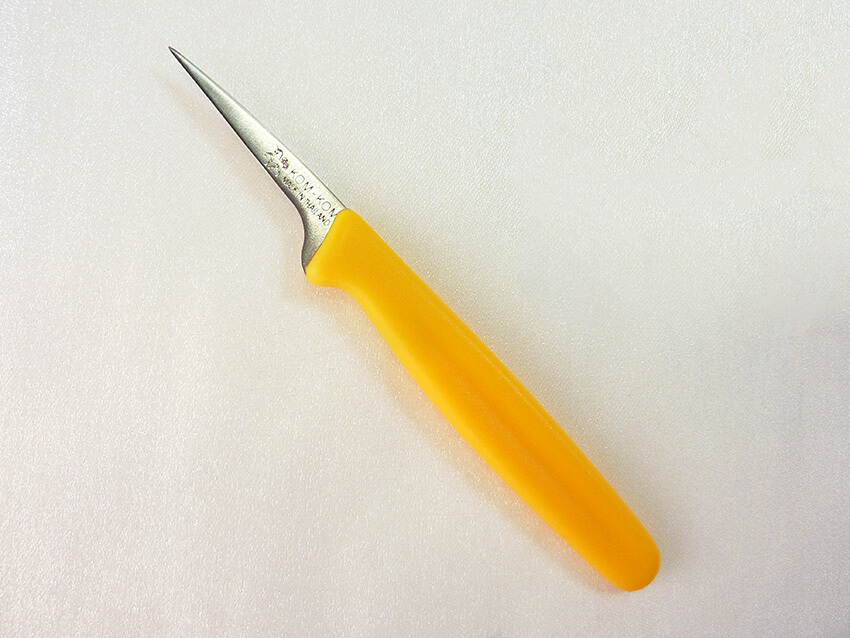
A carving knife manufactured by Kom Kom in Thailand. This knife is affordable and easy to use, so it is popular with beginners. It has a plastic handle and a sharp stainless steel blade like a beak of the bird.
There are many similar carving knives, but the Kom Kom knife is the best out of them all.
Similar carving knives are cheaper than the Kom Kom knife, but the blade of them are too thick to carve bar soaps.
However this knife is not suitable for very delicate design because the blade is not as thin as the classic carving knife.
Kom Kom carving knife is also useful for home cooking such as cutting vegetables into decorative shapes, even if you don't carve soap.
- Relatively low price
- Good for basic soap carvings and vegetable carving
- Not suitable for delicate designs
Light carving knife
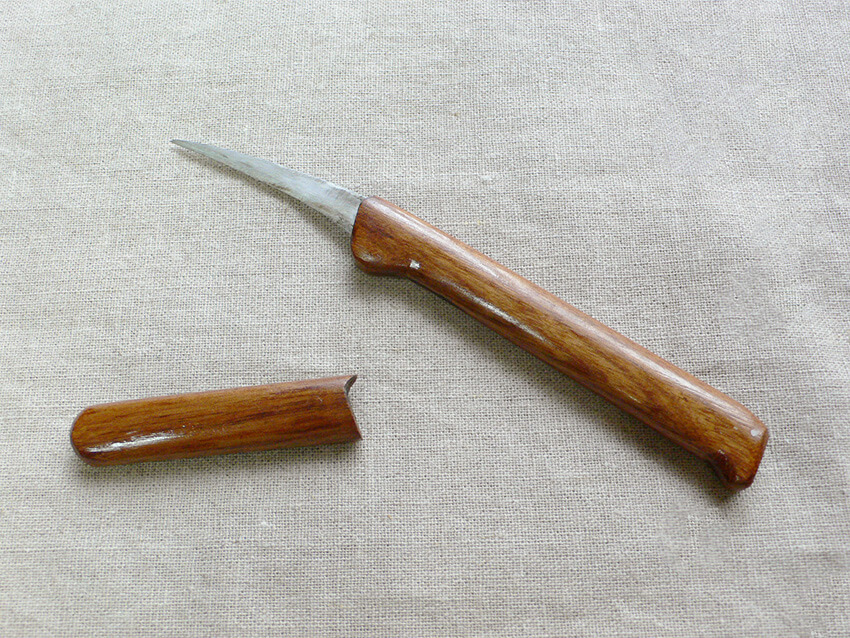
A carving knife that is often used by beginners at famous carving schools in Thailand. This knife has a wood handle and a sheath. It is lightweight tool.
However, it's not recommended to carve soaps, because the cutting edge of the blade is curved. Recommended for carving fruits or vegetables.
- Good for carving fruits and vegetables
- Not suitable for soap carving
Wallpaper Cutter
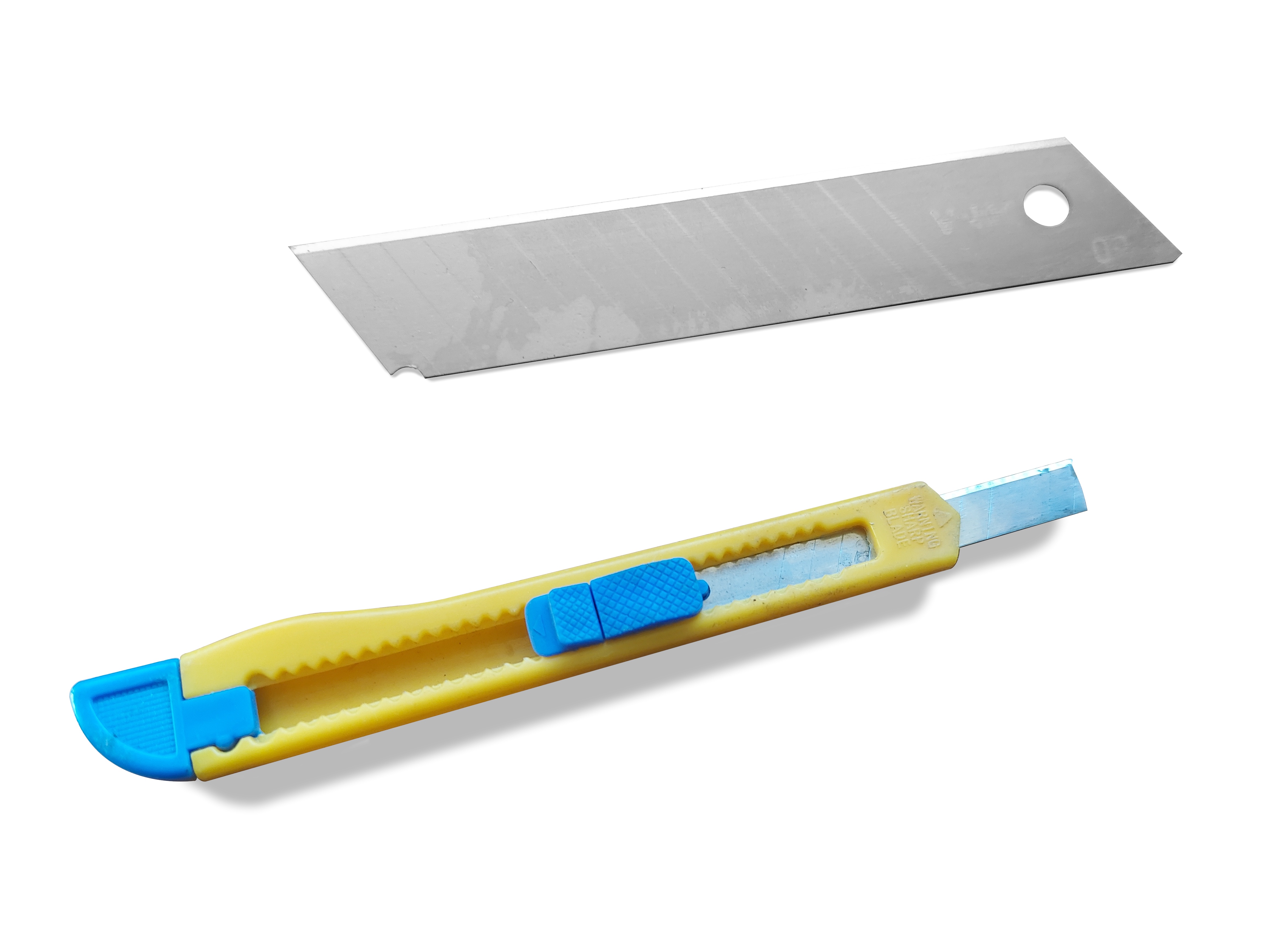
This unconventional yet exceptionally cheap tool can be used for simple yet relatively precise cuts. While its blade is thicker than standard carving knives, it's thinner and sharper than most kitchen knives. I recommend to use it for basic and moderately precise cuts. Thanks to its low price and the possibility to already have it in household, it's great choice for casual carvers.
Blades are cheap and easy to replace, and cutter cases have handle for adjusting the blade length that is the best for your needs.
However, it's not suitable to carve fine and curved details, such as rose petals, since blade is rigid and too thick.
It's also known as as box cutter or a utility knife
- Very low price
- You might have it in your household
- Readily available, comparing to standard carving knives
- Replaceable blades
- Easy to use
- Good for carving basic and moderately complex details
- Not suitable for carving fine and curved details
- Don't cut hard soap, the blade could snap off
Blade lengths
There are different lengths of the blades:
- 4-4.5 cm (1.6-1.8") (short)
- 4.5-5 cm (1.8-2") (medium)
- > 5 cm (2") (long)
I recommend a 4 to 5 cm blade knife for soap carving, since a bar soap is smaller than a fruit or a vegetable such as a watermelon or a pumpkin. Consider your hand size to choose a suitable knife.
